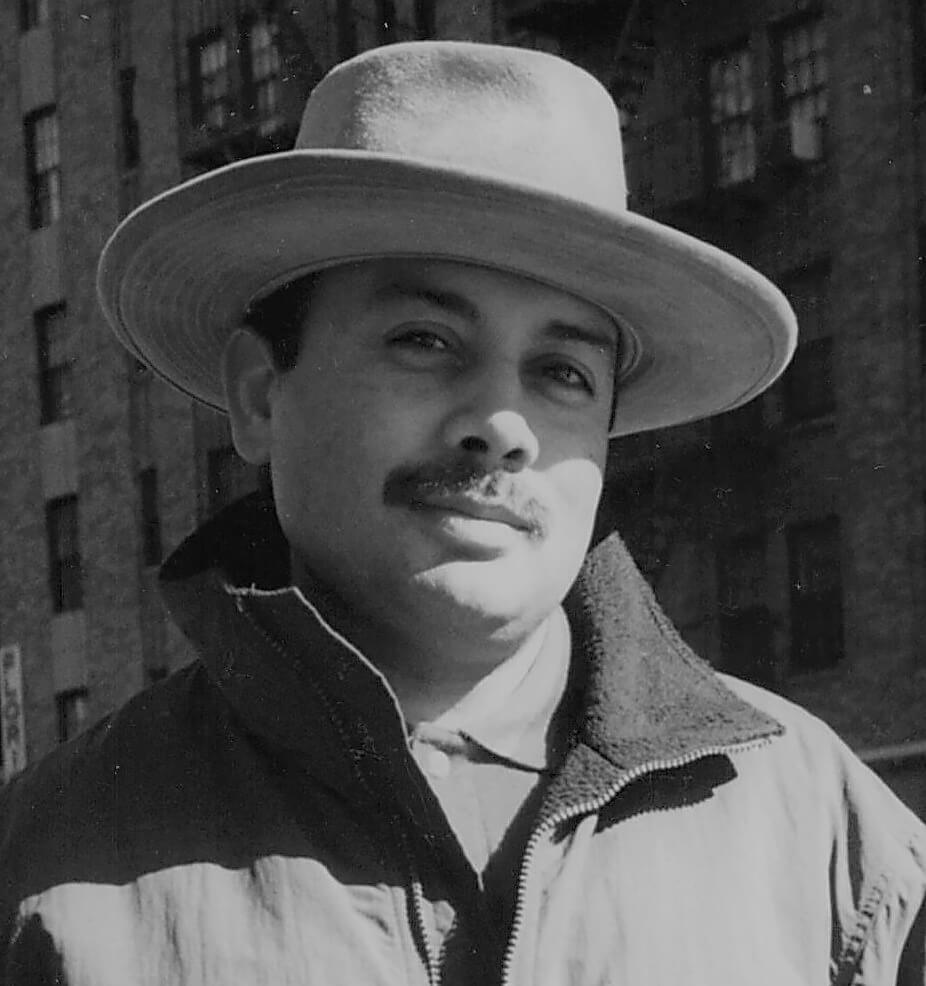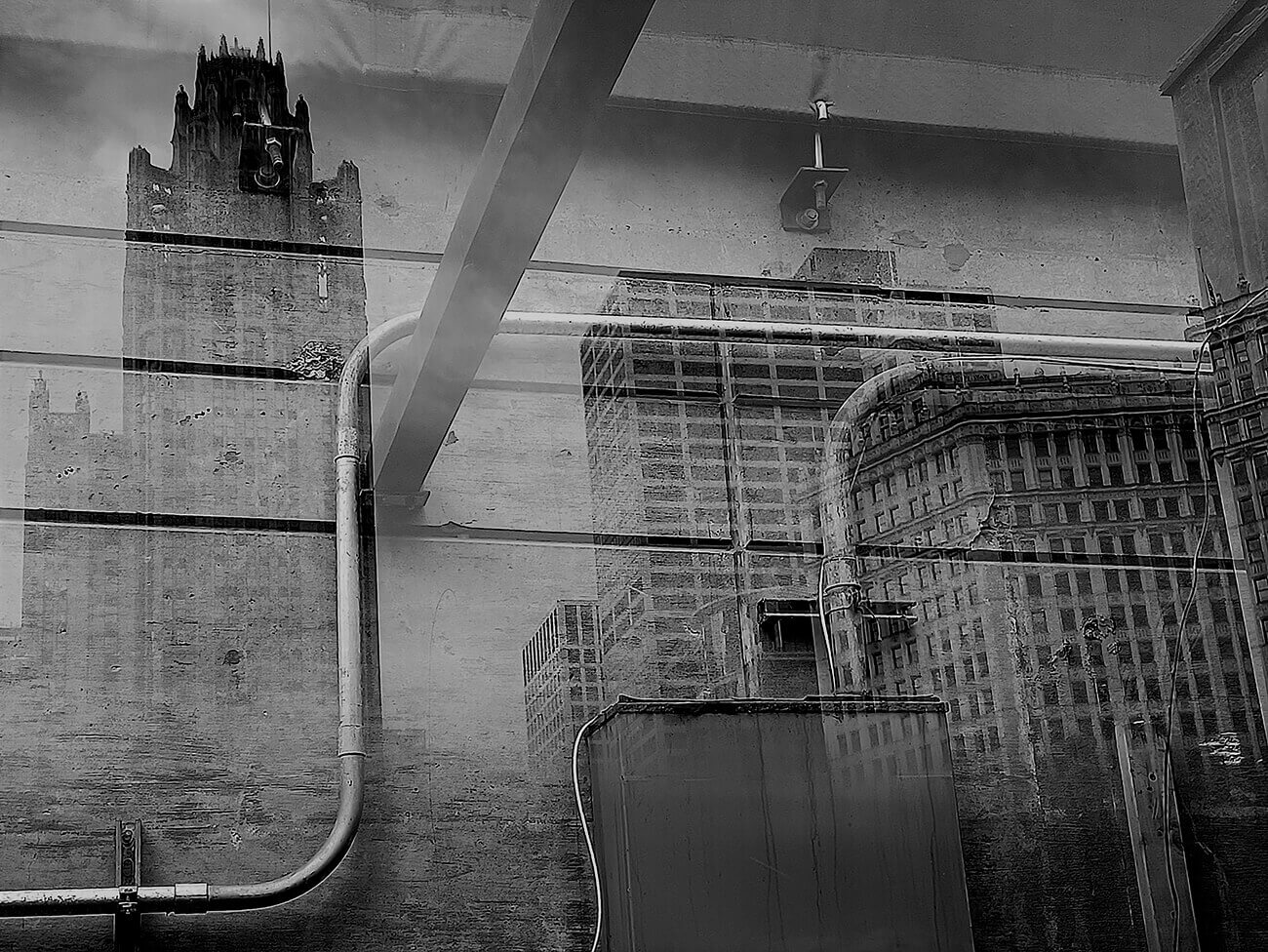''Accident is the name of the greatest of all inventors.'' - Mark Twain (1835-1910)
''Morning comes like a scream through a pinhole.'' - David Eggers, Author: ''A Heartbreaking work of staggering genius.''
We discover all manner of unfathomable tangibles and intangibles through orifices. Fancy name: apertures. In fact, we derive our greatest
disasters and pleasures through a variety of apertures. Any denials? If any, keep them to yourselves. This is not a philosophical pillow fight,
but an intriguing ''porthole accident'' I had, that had yielded something quite surprising.
I and my younger son were waddling around on the river walk in Chicago - and trust me, I was not looking for anything in particular, least
of all a hole to look at, into or through, but it so happened that I could not avoid it when I saw one. The river walk is a long winding
promenade that affords one a view of the buildings from low vantage point, a fascinating perspective, nevertheless, few feet above the
undulating emerald body of the Chicago river - and it's relentlessly plied by cruise boats with passengers mostly from out of town. The
cement retaining wall by the promenade is a gritty gray embankment that rises several feet high to the mezzanine level of the Lower Wacker
Drive, and the wall is billeted with all manner of pipes, thick and thin - a labyrinthine assortment of connections that seem to telegraph every
concatenation we and our way of life embody.
Right past and under the Michigan Avenue bridge (also known as the DuSable bridge) on the promenade there was this boat dock for
passenger embarkation-debarkation. A luxury cruise-boat ticket office was set off against a wooden wall with glassed portholes that was clad
atop the same cement embankment, giving off the impression of cabin portholes on a large cruise liner. Mind you, a porthole, relative to this
large panorama of buildings from a low perspective, was actually a pinhole - a pinhole of possibilities. Now before I go on to share my
discovery, I must engage us in a little dialectic process that airs our understanding for such accidents - rather, fortuitous aesthetic incidents.
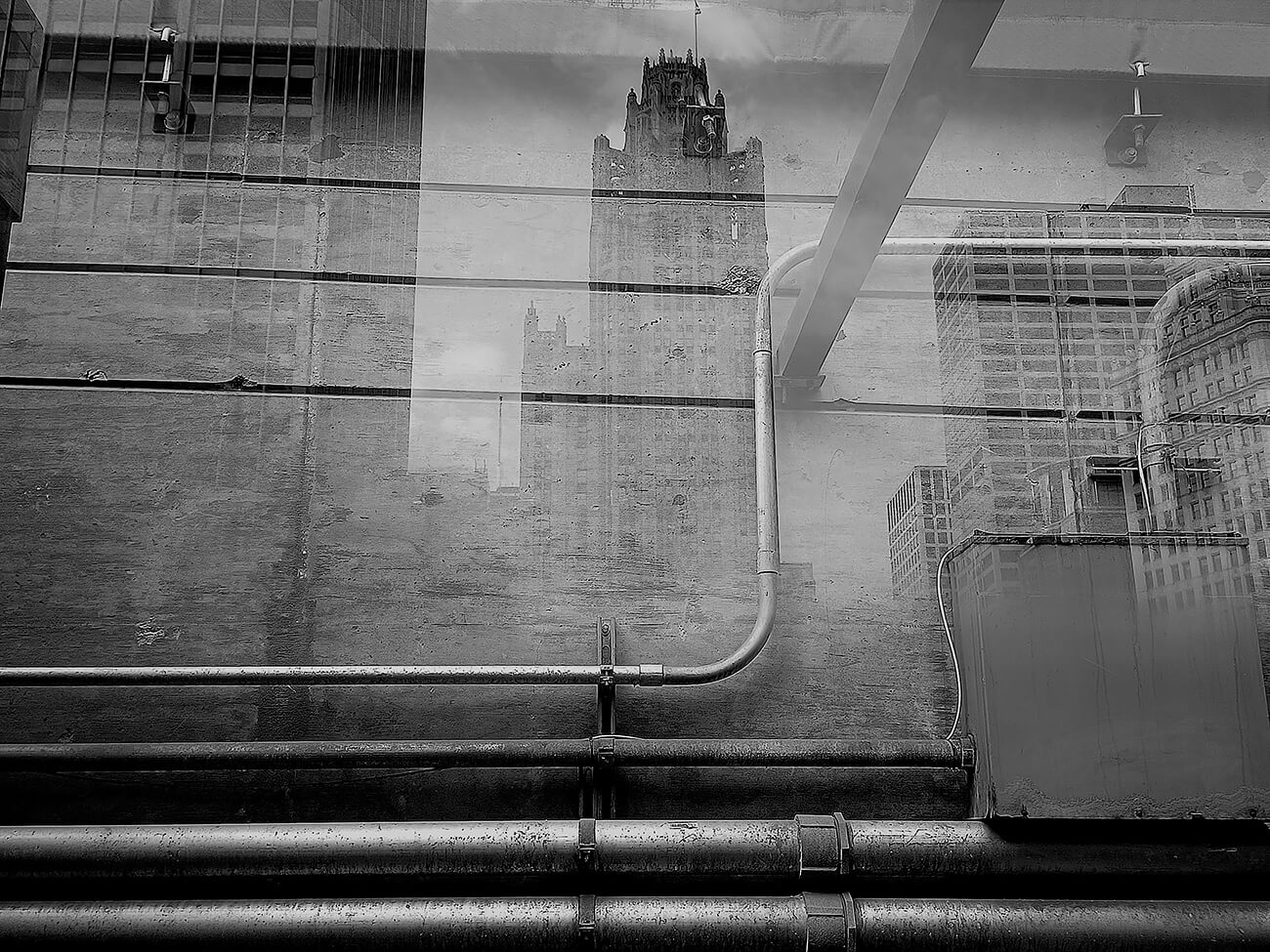
Accident, as proposed by Aristotle (it's surreal how we refer to Aristotle as a guy next door, forgetting this little fact that this man had
contemplated all of this before Alexander of Macedon was born) is the distinction between the accidental and essential properties of things.
For example, a table can be of wood or metal or plastic, but this is accidental to it being a table - that is, it's still a table regardless of the material it's made of. If this theory is transposed, it means this: the image will still be an image, despite its accidental manifestation in
strange materials. In modernist philosophy, an accident (or accidental property) is the merging of two concepts: property and contingency. To
all philosophical propositions, there are always contrasting or contradicting theories. Willard Van Orman Quine offers that there are no
essential properties, and therefore every property is, essentially, an accident. That every property is the consequence of its reactionary aspects
to the conditions present, in molecular fluctuations - therefore, always an accident, labeled as ''Anti-Essentialism. Saul Kripke debunks that
with his ''Necessitarianism,'' and on it goes. We will be here for an eternity, if we had to delve and convulse in the vortex of such
postulations of the various thinkers on what an accident is.
To me, Accident is, the unexpected, without a deliberate plan or cause. A chance happening that visits on us or we happen on, and it can be
unfortunate or fortuitous. In the sphere of the arts and the sciences, almost all accidents are fortuitous. How can we forget Jackson Pollack
and his squiggly paint accident that had set him off in another direction. How about Picasso and Braque's Cubism? Dali and Man Ray spent a
good part of their careers planning elaborate accidents, known as surrealism. The Big Bang, Penicillin, plastic, the microwave, Vaseline,
strike-match, anesthesia, Teflon, radioactivity and Viagra were happy science accidents. In photography, the chance of being surprised or
shocked is a rare phenomenon experienced immediately but short-lived by the photographer, before other aspects take over.
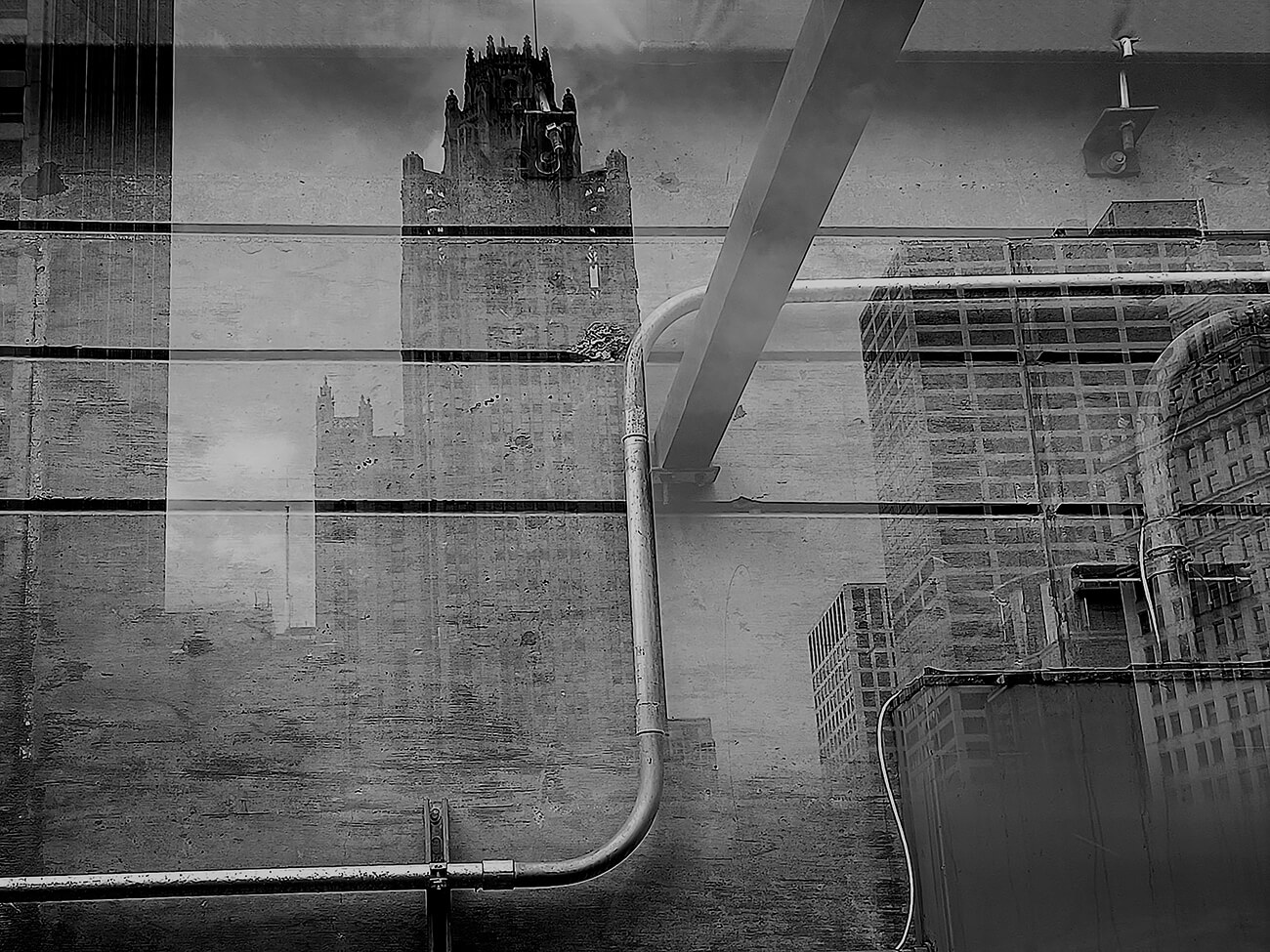
You see, the photographer has the unenviable task of transferring his accident and surprise to you, the viewer. The accidental immediacy or
shock value is infinitely difficult to transfer via a two dimensional medium, this is why Mathew Brady, during the Civil War, had moved
fresh corpses of soldiers, before the rigor mortis had set in, into gruesome positions after a battle to capture the immediacy and shock of their
sudden and brutal deaths to the first time audiences of photography. What Mathew Brady had experienced was the smoke, smell of gun
powder, the bleeding wounds, shouts and groans of men still in the process of dying, the couriers rushing off with telegrams and sketches -
the whole aftermath of the mayhem, but, he had realized that his three dimensional experience at the location could never be transferred, thus
the staging of his iconic shots.
A photographer, despite the location and the event, cannot afford to really experience it. He has to set about becoming immune to it and
calibrate frantically to capture the essence of it. This is something Robert Capa was aware of, thus he tried his level best to capture the
immediacy of incidents. Who can ever forget his photograph of soldier getting shot, dying and falling during the Spanish Civil war? Even
great photographers cannot transfer a sudden event or the whole three-D experience to the audience. Walker Evans and Ansel Adams had
traveled to remote dangerous places to make some great images - but, despite their brilliance, they couldn't telegraph their whole experience.
Most of the time, surprise is only the privilege of the photographer at the location. It's the same in my case - my surprise cannot be
transferred to you all. However, I love being where most accidents or surprises unfold: the urban environment.
The City is an interactive zone. It facilitates associations that result in reactionary forces - and it is my favorite foil for photographic
possibilities. An urban setting is a gigantic jumble of materials, shiny or matte in textures, in some of the weirdest juxtapositions. It is a
veritable jungle of possibilities for someone perceptive and observant. There is such a thing as the intelligent shot versus the intuitive shot
(another article). The prior is topical, pedestrian; the latter must be hunted for - like a bail bondsman looking for a fugitive in city of eight
million. Every angle, obtuse or acute, every turn sharp or soft, all layers of glass plates, all surfaces, and every opening, whether rhomboid or circular, is an aperture that allows light onto another surface, thus projecting an image. In other words, every opening is like the chimeric
camera lens and its aperture, that allows a certain focal width and length of light projected or cast onto another surface behind that opening,
exactly like film behind the lens inside that body of the camera. Well, the city is nothing but a collection of accidental cameras everywhere,
reflecting, casting, projecting and capturing thousands of images 24/7 - how many of us do notice this astonishing phenomenon?
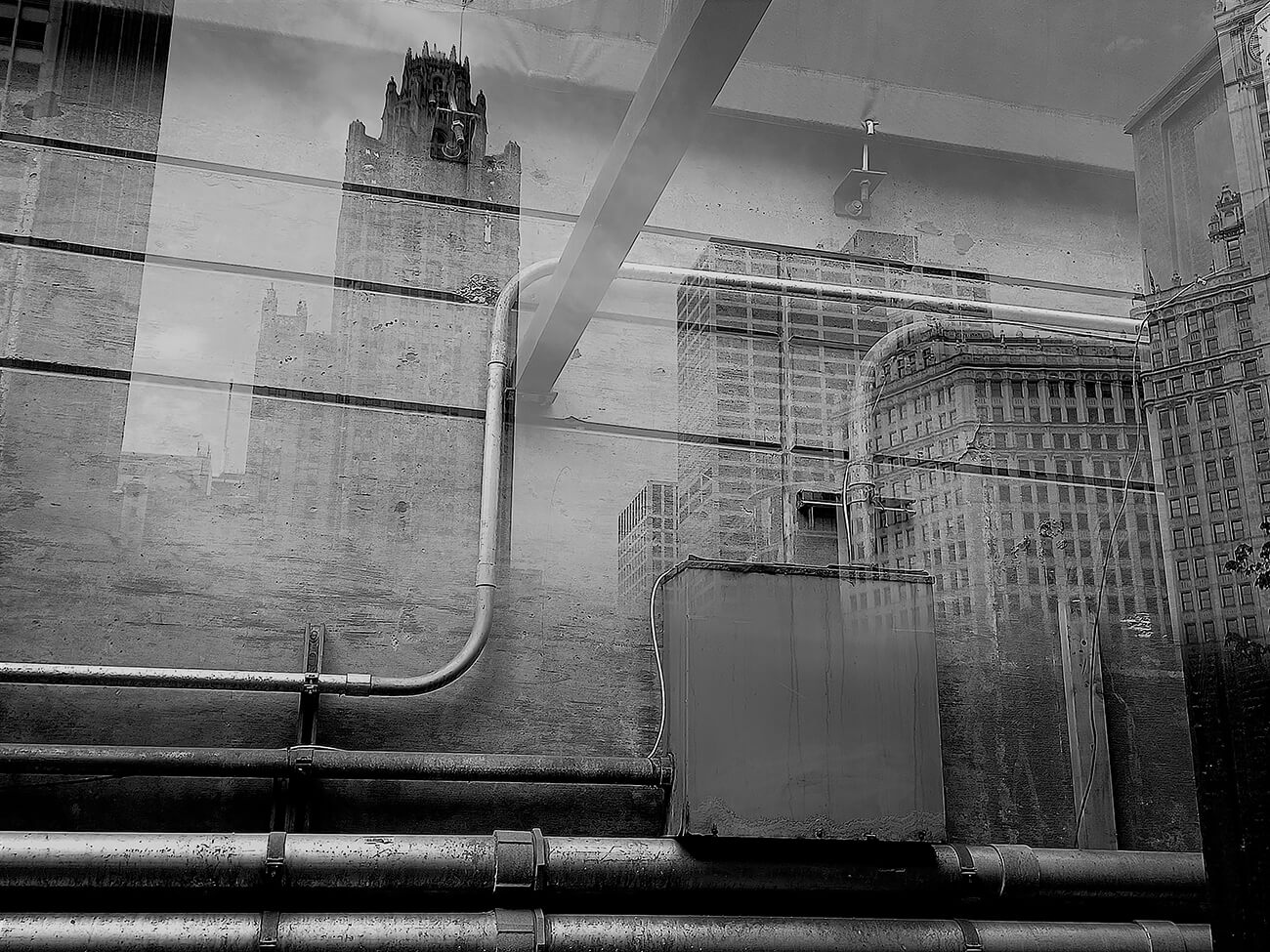
If you happen to look through a plate of glass at eye level standing at 45 degrees to it, which is a corner of a modern building, where two
plates of glass are juxtaposed at 90 degrees to each other, you are going to see several confusing images: A. the reflected image from your
right, which is 90 degrees to where you are; B. the direct cast image inside on another surface; C. the reflection from the glass plate away
from you on the other side; D. and another straight image through the far plate; E. then the composite of all four into one. It's an ambiguous
parchment of images that we cannot peel away as distinct layers because the frayed edges meld into each other - pretty much an insightful
visual commentary about life: a series of confusing realities overlapping each other, nevertheless all connected. But then this ambiguous
palimpsest happens to be our aesthetic treasure chest. And, ambiguity is that sublime state that the greatest artists among us always strive for.
What I strive for is the painterly textural representation of reality through a lens. The parallel lenses that I had stumbled onto was this faux
porthole by the dock. When I peered through it, at first it did not register, but slowly as my eyes adjusted to the gray light of the cement
embankment, I realized that I was looking into a camera through its lens (the porthole) and onto to a gray film, where I found the capture: a
coarse grading and textural half developed image of the buildings on the opposite bank: the Tribune Tower and the surrounding buildings. A
delectable image, as if eaten away by some fantastic acid from an apocalyptic event eons ago - a melancholic erosion, a sublime ruinous
state that Comte de Volney would have consecrated. I moved to an angle not perpendicular to the glass plate, pointed my camera into this
accidental camera lens and managed to capture this accidental gem. It was something so esoteric that happening upon it for me will remain
indelible.
Copyright Raju Peddada, August 3, 2022. All Rights Reserved on the images and text.
More Articles by Raju Peddada
Dichotomic Photography
The Surreal is Real
Aberration as Art 